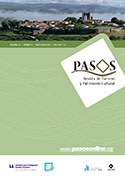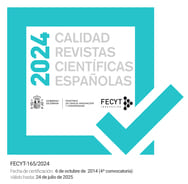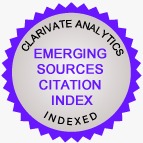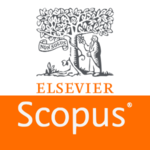Green spaces in Porto: Urban renewal and tourism potencial
DOI:
https://doi.org/10.25145/j.pasos.2025.23.038Keywords:
Sustainability, Parks, Public Gardens, Urban Tourism, Requalification, Oporto, PortugalAbstract
There are several issues associated with the growing population density of metropolitan areas, especially in terms of environmental sustainability. Since many environmental problems are concentrated in urban areas, it is crucial to preserve and expand green spaces in order to bring back some ecological equilibrium. After COVID-19, people's love for urban green areas has grown again because they are so beneficial to locals, tourists, and ecosystems. This study looks at parks and gardens in Porto, Portugal, using fieldwork to pinpoint places that require improvement and emphasize important advantages and disadvantages. The results are intended to guide plans for improving lesser-known green spaces, making sure they get the same consideration as more well-known spots in the city center and along the Douro River.
Downloads
Publication Facts
Reviewer profiles N/A
Author statements
- Academic society
- PASOS. Revista de Turismo y Patrimonio Cultural
- Publisher
- Instituto Universitario de Investigación Social y Turismo. Universidad de La Laguna (España) - Instituto Universitario da Maia ISMAI (Portugal)
References
Arnberger, A., & Eder, R. (2015). Are urban visitors’ general preferences for green-spaces similar to their preferences when seeking stress relief? Urban Forestry & Urban Greening, 14(4), 872–882. https://doi.org/https://doi.org/10.1016/j.ufug.2015.07.005
Beatley, T. (2016). Singapore City, Singapore: City in a Garden (pp. 51–66). https://doi.org/10.5822/978-1-61091-621-9_5
Comissão Europeia. (2021). Oporto recebe menção especial no Prémio Cidade Acessível 2022 - Luxemburgo é cidade vencedora. https://portugal.representation.ec.europa.eu/news/Oporto-recebe-mencao-especial-no-premio-cidade-acessivel-2022-luxemburgo-e-cidade-vencedora-2021-12-03_pt
Guedes Vidal, D., Oliveira Fernandes, C., Viterbo, L. M. F., Vilaça, H., Barros, N., & Maia, R. L. (2021). Usos e perceções sobre jardins e parques públicos urbanos.: Resultados preliminares de um inquérito na cidade do Oporto (Portugal). Finisterra, 56(116 SE-Artigos), 137–157. https://doi.org/10.18055/Finis19813
Hill, M. M., & Hill, A. (2012). Investigação por questionário. Silabo. http://hdl.handle.net/10400.2/8497
ISPUP - Instituto de Saúde Pública da Universidade do Oporto. (2022). Crianças que vivem mais próximo de áreas verdes têm melhor desempenho cognitivo. https://ispup.up.pt/criancas-que-vivem-mais-proximo-de-areas-verdes-tem-melhor-desempenho-cognitivo/
ISSUU. (2021). Official Tourist Map of Oporto. https://issuu.com/visitOporto/docs/mapa_turi_stico_Oporto
Madureira, H. (2001). Processos de transformação da estrutura verde do Oporto. Revista Da Faculdade de Letras — Geografia, XVII–XVIII(I), 137–218. https://ojs.letras.up.pt/index.php/geografia/article/view/7739/7103
Martins, H., Carvalho, P., & Almeida, N. (2021). Destination Brand Experience: A Study Case in Touristic Context of the Peneda-Gerês National Park. Sustainability, 13(21). https://doi.org/10.3390/su132111569
Martins, H., Carvalho, P., & Almeida, N. (2023). Destination Brand Experience and Place Attachment : A Study at the Peneda-Gerês National Park. Tourism: An International Interdisciplinary Journal, 71(1), 106–120. https://doi.org/https://doi.org/10.37741/t.71.1.7
Martins, H., Mendonça, J. P., & Oliveira, A. (2022). Place Attachment as a Multidimensional Construct: A Structural Equation Modelling. In M. D. Vujicic, A. Kasim, S. Kostopoulou, J. Chica Olmo, & M. Aslam (Eds.), Cultural Sustainable Tourism (pp. 33–43). Springer International Publishing.
Martins, H., & Pinheiro, A. J. (2022). Visitors’ Perception of Tourist Attractions in a Green Protected Area: The Case Study of the Peneda-Gerês National Park. In A. Mandić, R. A. Castanho, & U. Stankov (Eds.), Cultural Sustainable Tourism (pp. 51–65). Springer International Publishing.
National Institute of Statistics. (2023). Anuário Estatístico da Região Centro - 2022. http://www.ine.pt
Oporto. (2022a). Parques e Jardins. https://ambiente.cm-Oporto.pt/estrutura-verde/parques-jardins
Oporto. (2022b). Soluções inspiradas na natureza. https://ambiente.cm-Oporto.pt/solucoes-inspiradas-na-natureza/solucoes-inspiradas-na-natureza
TrabelBI. (2018). Perfil dos Turistas do Oporto e Norte de Portugal | 2017 (IPDT (ed.)). https://travelbi.turismodeportugal.pt/comportamento-do-consumidor/perfil-dos-turistas-do-Oporto-e-norte-de-portugal-2017/
Tuckman, B. (2000). Manual de Investigação em Educação Lisboa, Fundação Calouste Gulbenkian. This Work Is Licensed under a Attribution-NonCommercial-NoDerivatives, 4.
Turism of Portugal. (2017). Estratégia Turismo 2027.
Downloads
Published
How to Cite
Issue
Section
License
Copyright (c) 2025 Ana Mota, Hugo Martins, Eduardo Gonçalves, António Pinheiro

This work is licensed under a Creative Commons Attribution-NonCommercial-NoDerivatives 4.0 International License.
I confirm that the work is original (of my/our authorship), and that it will not be submitted to other journals or publications until the final resolution of the review process in PASOS, RTPC.
I authorize the publication of my work by PASOS, PSTN of free and open access in any of the formats that I deem appropriate, for an indefinite period of time and as a non-remunerated collaboration.
Likewise, the author(s) understands that the published work may be linked or deposited on any server or included in other publications (republication), provided that the new place and/or new edition references the original publication and acknowledges the authorship and copyright ownership of PASOS RTPC publications.
Authors understand that a plagiarism-self-plagiarism check will be performed, and the article may be removed at any time from the editorial flow.










